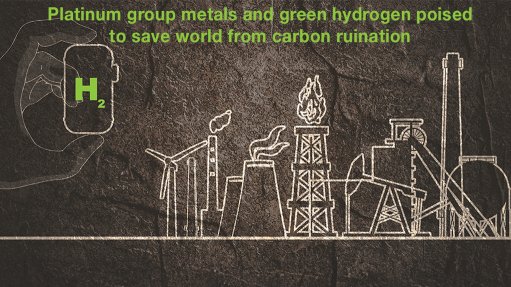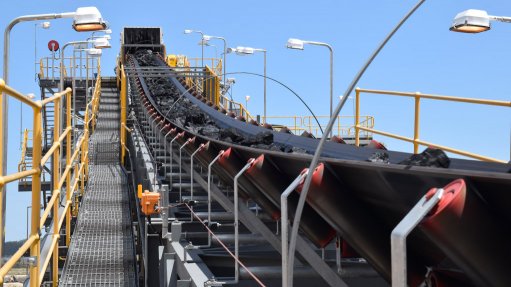Chamber official calls for ‘tough’ decisions for mining to reach its full potential


ROGER BAXTERAt a 5% growth rate, the mining industry can increase exports and reduce the savings-investment constraint and add another 100 000 direct jobs
Photo by Duane Daws
Tough decisions would have to be made to help the mining sector reach its growth potential, Chamber of Mines economics and strategy senior executive Roger Baxter said last week.
If growth constraints were removed, the sector would be able to sustain growth of between 3% and 5% a year and double its size by 2028, Baxter said at the KPMG Mining Tax seminar held in Johannesburg.
“If mining had grown at the same pace as rest the of the economy between 1994 and 2012, it would have increased the country’s growth rate to 3.9% from 3.2%, a significant difference. At a 5% growth rate, the mining industry can increase exports and reduce the savings-investment constraint and add another 100 000 direct jobs.”
Without constraints such as rail capacity, iron-ore production could be doubled to more than 100-million tons a year by 2020 and employment could rise from 18 000 to 30 000 people.
Baxter said coal production had to increase from the current 254-million tons a year to more than 320-million tons by 2020 to satisfy State-owned power utility Eskom’s rising needs, replace ageing mines and grow exports. If this production level was achieved, jobs in the sector could increase from 80 000 to 100 000 by 2020. “Again, the biggest constraints are rail constraints and environmental regulatory issues,” said Baxter.
If current constraints, such as a lack of access to efficient, cost-competitve heavy-haul rail, were eliminated, manganese production could increase from the current 7.2-million tons to between 15-million tons and 20- million tons by 2020 and employment in the setor could rise from 5 879 to more than 10 000 during this period.
“South African mining is in intensive care and we have not met our potential. Input costs are rapidly increasing and productivity has fallen, while real costs per unit of output have risen quickly. Tough actions are required to ensure the long-term sustainability of the industry,” Baxter stated.
He noted that, since late 2011, the South African gold mining sector had been affected by a combination of falling gold prices, rapidly escalating input costs, declining grades and falling productivity, coupled with illegal strikes.
During the fourth quarter of last year, about 40% of the gold mining sector was either in a marginal or lossmaking position on a cash cost basis, said Baxter, warning that, if current trends continued, South Africa could produce less than 90 t/y of gold by 2020.
He suggested that all stakeholders work off an agreed and shared fact base of where the industry is in terms of productivity and the economics of the sector and understand that they all have a role to play in moderating cost pressures and improving productivity.
“Goals in the sector are best achieved through collaborative efforts, with all stakeholders agreeing on the challenges to be dealt with and working on the best way forward,” he stated.
Meanwhile, he noted that perceptions in the domestic mining industry showed little link was made between the role of minerals and the functioning of a modern society. He added that little credit was given to the mining industry for playing a key role in local economic development over the past 130 years, during which the South Africa was transformed into the most industrialised country on the continent.
He highlighted that 200 000 jobs were created in downstream industries and that the mining industry had seen a 67% reduction in its fatality rate in the last five years. Further, the average wage had increased by 12% a year and about R2-billion was spent on communities last year, with R4-billion being spent on skills development and R20-billion received by government in corporate taxes last year.
Comments
Press Office
Announcements
What's On
Subscribe to improve your user experience...
Option 1 (equivalent of R125 a month):
Receive a weekly copy of Creamer Media's Engineering News & Mining Weekly magazine
(print copy for those in South Africa and e-magazine for those outside of South Africa)
Receive daily email newsletters
Access to full search results
Access archive of magazine back copies
Access to Projects in Progress
Access to ONE Research Report of your choice in PDF format
Option 2 (equivalent of R375 a month):
All benefits from Option 1
PLUS
Access to Creamer Media's Research Channel Africa for ALL Research Reports, in PDF format, on various industrial and mining sectors
including Electricity; Water; Energy Transition; Hydrogen; Roads, Rail and Ports; Coal; Gold; Platinum; Battery Metals; etc.
Already a subscriber?
Forgotten your password?
Receive weekly copy of Creamer Media's Engineering News & Mining Weekly magazine (print copy for those in South Africa and e-magazine for those outside of South Africa)
➕
Recieve daily email newsletters
➕
Access to full search results
➕
Access archive of magazine back copies
➕
Access to Projects in Progress
➕
Access to ONE Research Report of your choice in PDF format
RESEARCH CHANNEL AFRICA
R4500 (equivalent of R375 a month)
SUBSCRIBEAll benefits from Option 1
➕
Access to Creamer Media's Research Channel Africa for ALL Research Reports on various industrial and mining sectors, in PDF format, including on:
Electricity
➕
Water
➕
Energy Transition
➕
Hydrogen
➕
Roads, Rail and Ports
➕
Coal
➕
Gold
➕
Platinum
➕
Battery Metals
➕
etc.
Receive all benefits from Option 1 or Option 2 delivered to numerous people at your company
➕
Multiple User names and Passwords for simultaneous log-ins
➕
Intranet integration access to all in your organisation


















